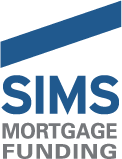FHA SECTION 221(d)(4) – Multifamily Accelerated Processing (MAP)
Loans to construct or substantially rehabilitate affordable and market rate multifamily rental housing
Definitions
- Affordable housing is defined as:
- Rent and income restrictions must be imposed, monitored and enforced by a governmental agency for at least 15 years after Final Endorsement, and
- Either
- a recorded Regulatory Agreement requiring the project to meet at least the minimum LIHTC restrictions of 20% of units at 50% of area median income (AMI), or 40% of units at 60% of AMI, with economic rents (i.e. the portion paid by the residents) on those units no greater than LIHTC rents, or
- a Project-Based Section 8 contract for 90% of the units.
Projects need not use LIHTCs to qualify for affordable underwriting so long as they meet the above requirements.
Program Features
- Combines construction and permanent financing approval in a single transaction.
- Loan is pre-payable, assumable and non-recourse; maximum 40-year term with full amortization.
- The cost of rehabilitation must exceed the greater of: a) 15% of the project’s replacement cost or b) $15,000 per unit adjusted by a high cost percentage based on geographic location; or, c) involve the replacement of at least 2 major building components. Projects whose costs fall below these levels may qualify under Section 223(f).
- Construction and rehabilitation costs are subject to Davis-Bacon wage requirements.
- For for-profit owners, a Builder’s and Sponsor’s Profit and Risk Allowance (BSPRA) of 10% of the development costs may be capitalized in the loan and applied towards the cash equity requirement at closing when there is an Identity of Interest between the mortgagor and contractor.
- In lieu of BSPRA, non-profit owners qualify for a Developer Fee of 8% of Mortgage Amount, but not less than $40k or more than $400k. (Market-Rate deals only)
- Construction contingency requirements for all substantial rehabilitation projects must be 10-15% of construction cost.
- Loan-to-cost (LTC) and debt service coverage (DSC) requirements are based on project type and loan size.
Loans < $120 Million
Project Type | Loan to Cost (LTC) | Debt Service Coverage (DSC) |
Market Rate | 85.00% | 1.176 X |
Affordable | 87.00% | 1.15 X |
Loans > $120 Million
Project Type | Loan to Cost (LTC) | Debt Service Coverage (DSC) |
Market Rate | 75.00% | 1.30 X* |
Affordable | 80.00% | 1.25 X |
fees
0.30% | Application Fee to HUD (.15% at Pre-application that is non-refundable and .15% at the Firm Commitment stage |
0.65% | Upfront Mortgage Insurance Premium (.25% or .35% for tax credit/affordable deals and .25% for “green” market rate deals) |
0.50% | Inspection Fee |
2.00% | Maximum Financing (Origination) Fee |
1.50% | Maximum Placement Fee |
2.00% | Costs of Issuance for Tax-Exempt Bond Transactions |
An annual .65% Mortgage Insurance Premium (.25% or .35% for tax credit/affordable deals and .25% for “green” market rate deals) is paid to HUD.
Escrows
- Full escrows required for property insurance, real estate taxes, and HUD mortgage insurance premium.
- Replacement reserve escrow for on-going replacement of depreciable items is required for the term of the loan. The amount of the annual deposit will be revised after 10 years based on a capital needs assessment.
- An Operating Deficit Escrow will be required. This escrow must be funded by the borrower at closing with cash or a letter of credit. For market rate and affordable new construction projects, and rehabilitation projects involving a substantial amount of resident displacement, the minimum escrow is:
Loan Amount | Minimum Operating Deficit Escrow |
<$25 | 4-6 months debt service |
$25M – $75M | 9 months debt service |
>$75 M | 12 months debt service |
>$100 M | 12+ months debt service |
- Market rate new construction projects require a Working Capital Escrow equal to 4% of the mortgage required at closing. This deposit must be funded by the borrower with cash or a letter of credit. Half of this escrow (2% of the mortgage) will be dedicated to cover change orders during construction. Market rate and affordable substantial rehabilitation projects require a 2% Working Capital Escrow – the contingency allowance covers change orders.
